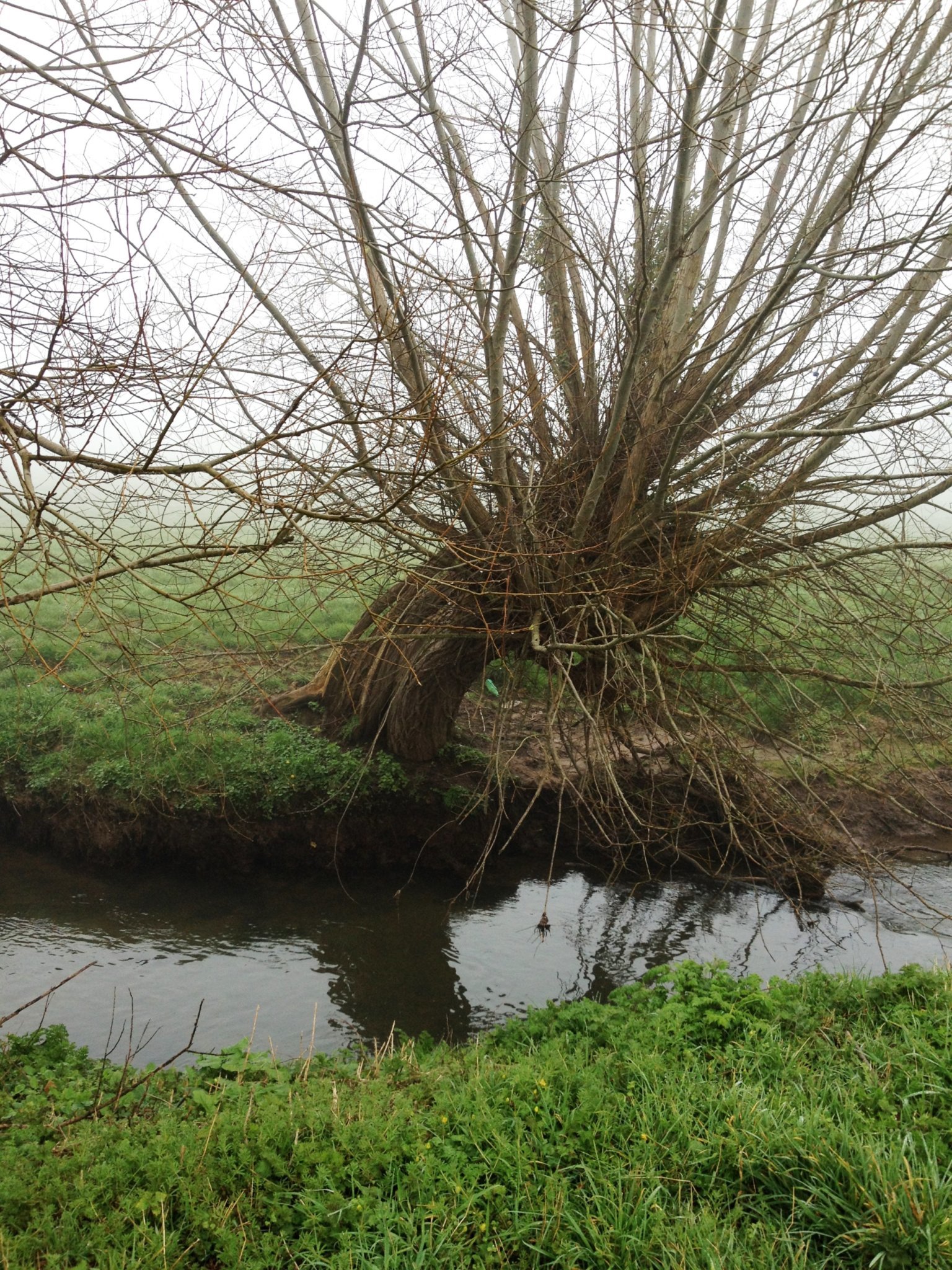Willow Pollards
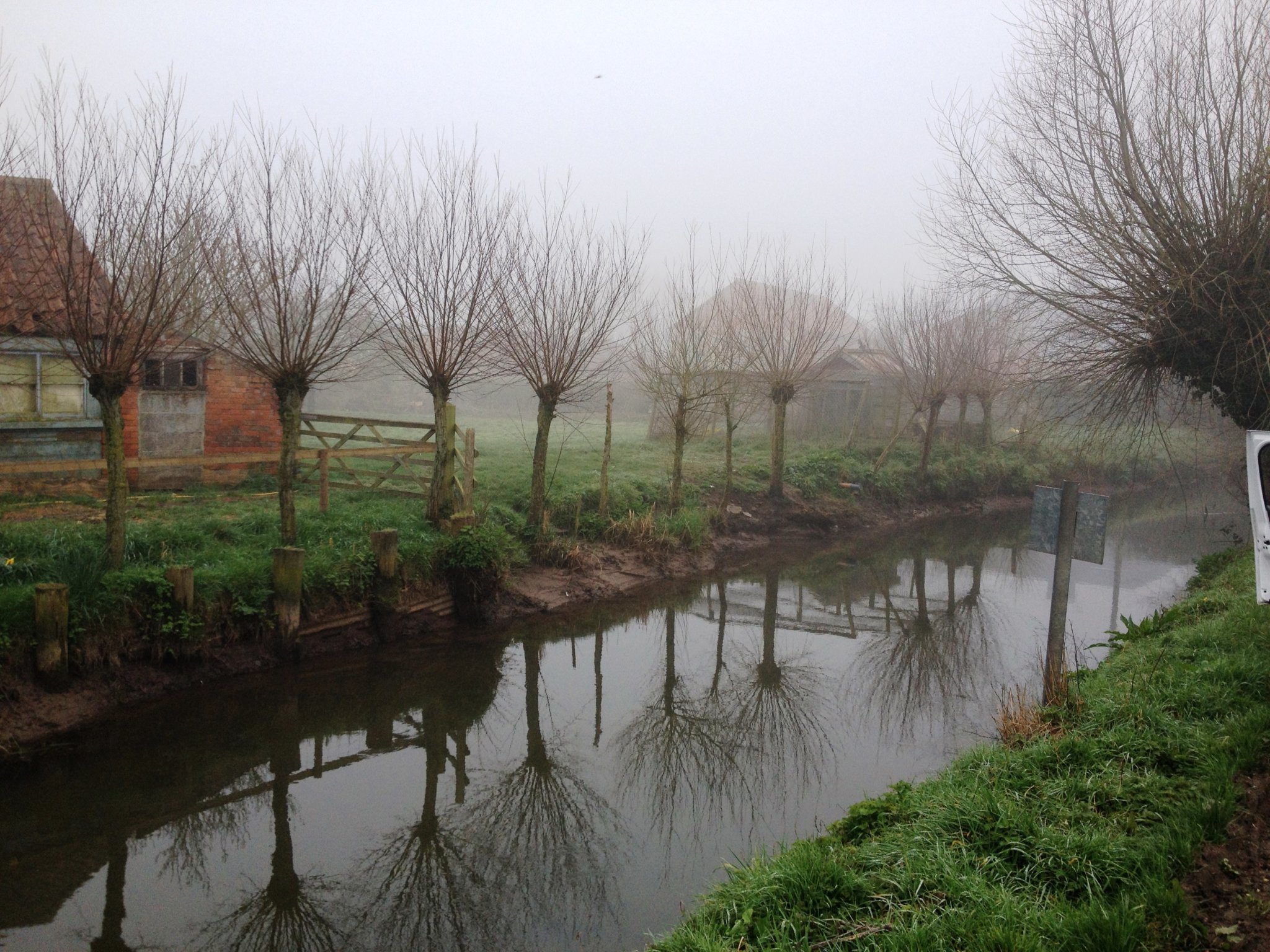
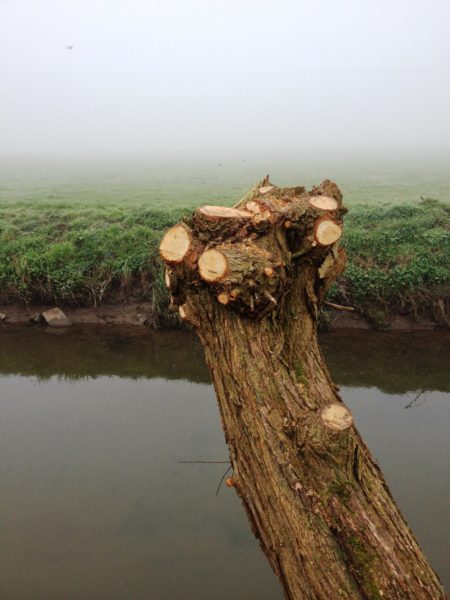
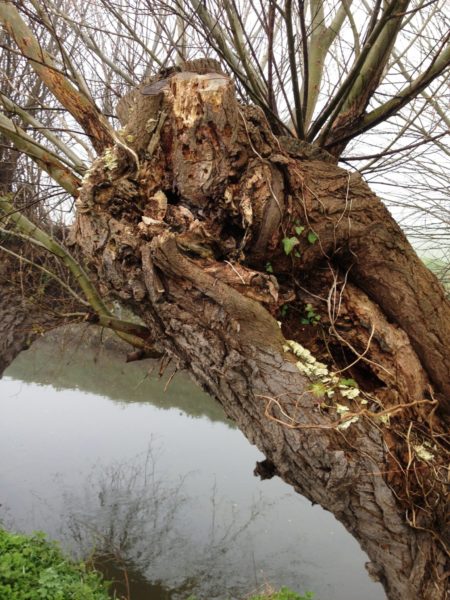
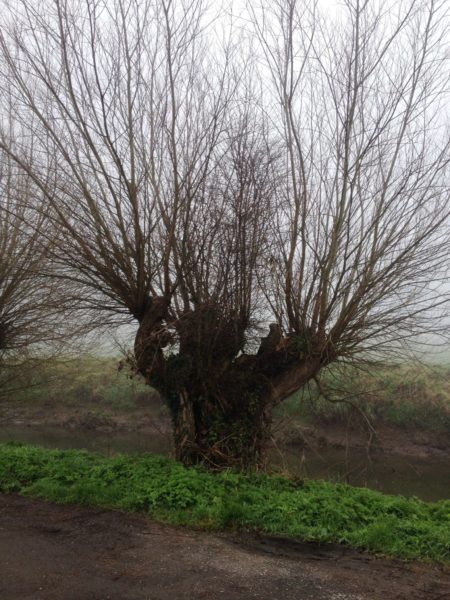
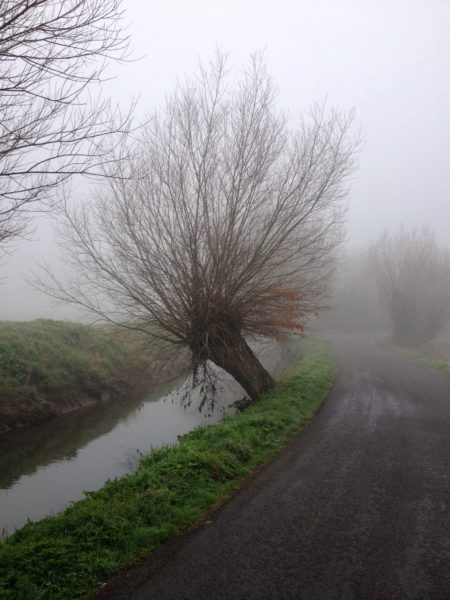
All along the watersides in this part of the levels grow willows of many sizes, cut in many different ways. Some are like shocks of hair, others like a sack thrown over the trunk’s back, and some like rows of Corinthian columns.
The fresh-cut stems in late winter shine like small golden coins. Arborists call the cuts “cookies”. A pollard head develops at the end of a large cut branch. There, the plant gathers large stores of starch and countless dormant buds. When the old sprouts are cut, new ones replace them in the same year. On a vigorous willow five to eight feet of growh in a year is not uncommon.
Vincent Van Gogh was a devotee of pollard willows. He painted and drew them many times. They give to the landscape a sense of character, of place, that responds to the shapes of the trees.
Over time, a head may decay, but willows are not too concerned about their longevity. Wherever a stem falls, it is likely to root. Willow branches that floats along a stream often root in the bank on which they lodge. That is why the tree can colonize a whole drainage.
